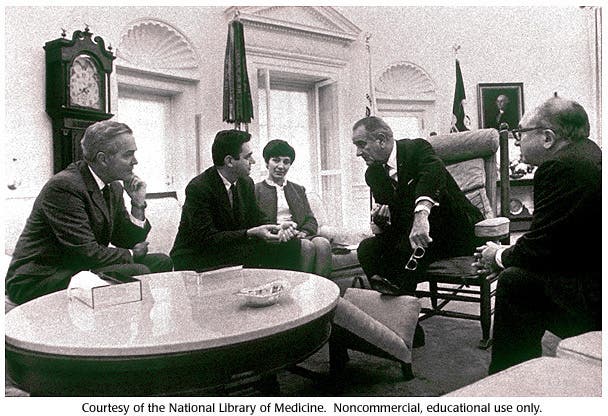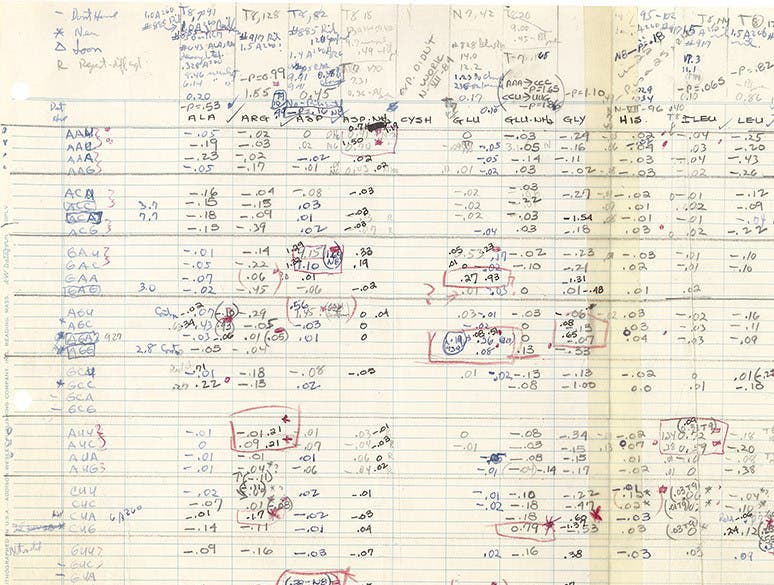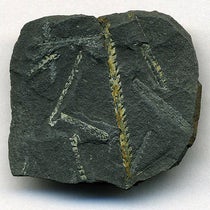Scientist of the Day - Marshall Nirenberg
Marshall Warrenn Nirenberg, an American biochemist, was born Apr. 10, 1927, in New York City. He studied zoology at the University of Florida and biochemistry at the University of Michigan, and then took a position at the National Institutes of Health in Bethesda. Beginning in 1959, he joined the hundreds of biochemists worldwide who were trying to crack the genetic code.
Francis Crick and James Watson had revealed the double-helix structure of DNA in 1953 and suggested that the sequence of bases in DNA was somehow a code for ordering amino acids in proteins. But no one knew what that code was. Since there are 20 different amino acids that can make up a protein, it had been suggested by George Gamow that the bases were arranged in triplets – four bases could be arranged in 64 different triplets, which was more than enough to code for 20 amino acids. But when Nirenberg began working on the problem, the triplet hypothesis was still just that, and no one knew the code for a single amino acid. And while it was understood that RNA played a role in protein synthesis, no one knew yet that RNA came in two different forms, now known as messenger RNA and transfer RNA.
Unlike most investigators seeking to decipher the code, Nirenberg decided to see if he could effect protein synthesis in a cell-free environment. He began with ordinary E. coli bacteria and broke down the cells, at first manually in a pestle, then with something called a French press. This extract had all the enzymes necessary for protein synthesis, and he broke up the bacteria’s own DNA with other enzymes. Nirenberg then added synthetic RNA, and he used RNA that consisted entirely of one base – that way it didn’t matter whether the code was written in triplets or doublets or any other pattern. The RNA strands were thus all uracil (UUUU...) or all adenine (AAA...) or all cytosine (CCC…). The goal was to see if the RNA could guide the synthesis of a protein, which presumably would be a string of one repeated amino acid. By this time, Nirenberg was working with a postdoctoral fellow from Germany, Heinrich Matthaei, who set up the experiments. On May 15, 1961, they began a nighttime run with poly-uracil RNA (UUU...), setting up 20 test tubes, each one with all 20 amino acids, but with only one of them radioactively labeled. By morning, they found that the test tube with radioactive phenylalanine now had radioactive protein consisting exclusively of phenylalanine. An RNA sequence of poly-uracil was clearly a code for phenylalanine. This was the first crack in the genetic code.
Nirenberg announced the results of the May 15 experiment at an International Congress in Moscow in August of 1961, first at a small session with just a few attendees, which was reported back to Francis Crick, who asked Nirenberg to repeat his paper the next day before a much larger audience. This presentation generated an enthusiastic response, and Nirenberg was suddenly world famous, at least among biochemists. His NIH lab soon confirmed that the triplet hypothesis was correct so UUU codes for phenylalanine, AAA for lysine, and CCC for proline – these were the first three amino acids to be decoded – and the race was on to map out the codes for all 64 triplets.
Nirenberg’s lab competed initially with the lab of the Nobelist Severo Ochoa at New York University, which had many more staffers and should have had a huge advantage. But NIH researchers pitched in to help Nirenberg as he worked on the code, and eventually NYU left the task to NIH. The decoding process was completed by 1966, so that the triplet code for all 20 amino acids had been worked out (some of the amino acids are coded for by more than one triplet). Nirenberg kept a master chart at NIH that still survives among his papers, and which has been put on display in exhibitions from time to time, showing all 64 triplets vertically at the left and the 20 amino acids across the top. You can see the complete chart at this link, and we show a detail of the top left corner here (fourth image). I, no biochemist, do not know how to read the entries in each box. But I can certainly admire it, a concise summary of 6 years of hard work by many people.
Nirenberg shared the Nobel Prize in Chemistry in 1968 for his role in breaking the genetic code. He continued to work at NIH until his retirement, and he passed away on Jan. 15, 2010.
I was greatly assisted in writing this piece by a recent book, Life’s Greatest Secret: The Race to Crack the Genetic Code, by Matthew Cobb (Basic Books, 2015).
William B. Ashworth, Jr., Consultant for the History of Science, Linda Hall Library and Associate Professor emeritus, Department of History, University of Missouri-Kansas City. Comments or corrections are welcome; please direct to ashworthw@umkc.edu.











